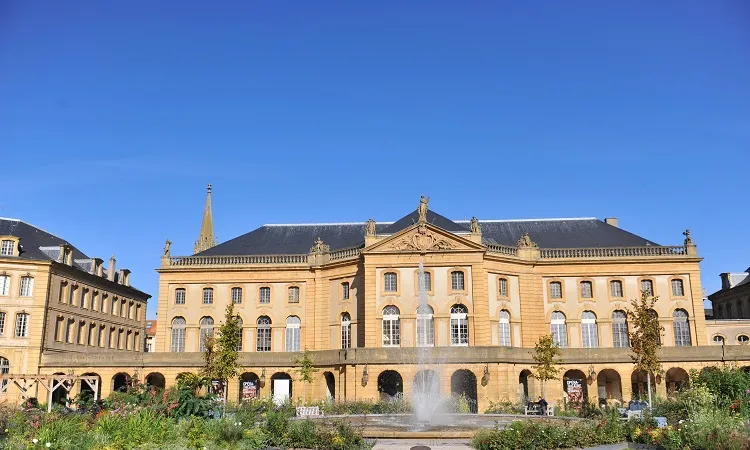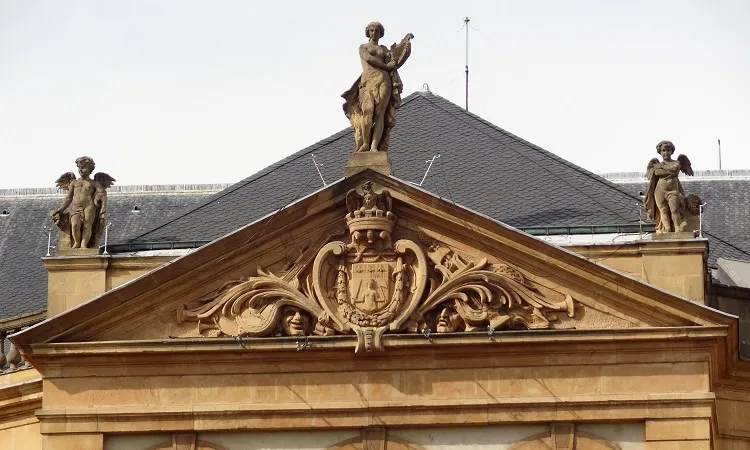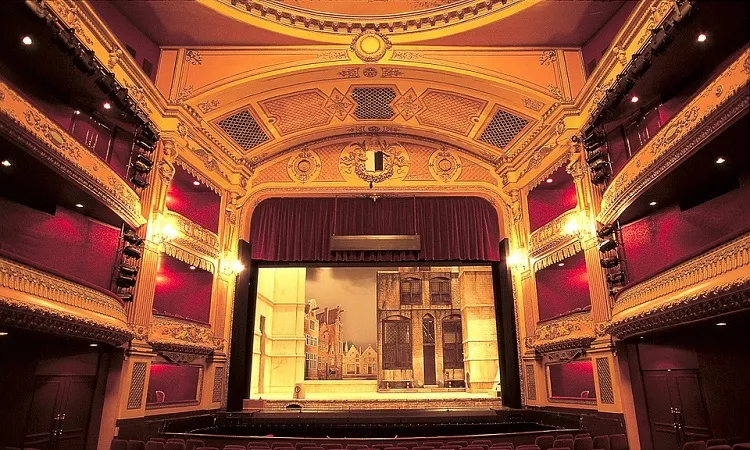France, the cradle of culture and art, is not only famous for its magnificent architecture and renowned museums but also the birthplace of splendid opera houses. These theaters are not just venues for top-notch artistic performances but also unique architectural works, imbued with French history and culture. Let “Travel the World” take you on a journey to explore the most beautiful opera houses in France, where art soars and architecture captivates.
Metz Theatre: An Antique Gem in the City’s Heart
When it comes to the most beautiful opera houses in France, the Metz Theatre is a must-mention. Built in 1738 and inaugurated in 1752, it is one of the oldest operating theaters in France. Located at 4-5 Place de la Comédie, 57000 Metz, the theater attracts visitors not only with its unique performances but also with its classical architectural beauty.

History of Formation and Development
The construction of the Metz Theatre lasted nearly 14 years, encountering many difficulties due to wars and financial issues. However, the persistence and talent of architect Jacques Oger created a magnificent architectural work. From its inauguration, the theater was praised as “one of the most beautiful opera houses in France” by the Duke of Belle-Isle.
Throughout its history, the Metz Theatre has undergone many changes. During the French Revolution, it was once the site of a guillotine. In 1858, sculptor Charles Pêtre adorned the theater’s facade with artworks depicting Tragedy, Inspiration, Lyric Poetry, Comedy, and Music. The most recent renovation took place in the 1980s, focusing on improving the interior to provide the best experience for the audience.
Classic and Luxurious Architecture
The Metz Theatre was built in the classical architectural style typical of the 18th century. Initially, the theater had a capacity of up to 1,300 spectators, but after the 1963 renovation, the number of seats was reduced to 750 to increase space and comfort for viewers.

The theater’s auditorium is designed to be extremely luxurious with red velvet seats and gilded railings. Statues of muses created by Charles Pêtre further enhance the classical and charming beauty of the space. Whether sitting in any position in the auditorium, the audience can fully admire the beauty of the performance.
Diverse and Rich Performance Programs
Since its inauguration, the Metz Theatre has been the stage for many classic works, from the plays of Racine, Corneille, and Molière to the works of Voltaire, Marivaux, Diderot, and Beaumarchais. The comedies of Grétry and Montsigny, as well as the operas of Jean-Baptiste Lully, have also been successfully staged here.

Today, the Metz Theatre still maintains about 60 performances each year, including plays, dances, and lyric poetry, from classical to contemporary works. The diversity in performance programs helps the theater attract a large audience of art lovers.
Opéra National de Paris: Symbol of Splendor and Art
If the Metz Theatre has an antique beauty, the Opéra National de Paris (also known as Palais Garnier) is a symbol of splendor and luxury. Located in the heart of Paris, this theater is not only a beautiful architectural work but also an indispensable part of French culture.
Eventful Construction History
The Opéra National de Paris was built from 1861 to 1875 by order of Emperor Napoléon III. Architect Charles Garnier designed a magnificent Beaux-Arts style building, with intricate and luxurious decorative details.
The construction of the theater encountered many difficulties, including the discovery of a groundwater stream underground. However, Garnier overcame all obstacles to complete a great work, becoming one of the most famous opera houses in the world.
Impressive Beaux-Arts Architecture
The Opéra National de Paris makes a strong impression with its luxurious Beaux-Arts architecture. The facade of the theater is decorated with statues, reliefs, and exquisite marble columns. Inside, the auditorium is designed with red and gold as the main colors, creating a magnificent and luxurious space.

One of the most prominent features of the Opéra National de Paris is the ceiling painted by artist Marc Chagall in 1964. This giant ceiling painting depicts scenes from famous operas, creating a unique and impressive artistic space.
Top-notch Performance Programs
The Opéra National de Paris is home to world-class opera and ballet performances. The theater has two main performance venues: Palais Garnier and Opéra Bastille. Palais Garnier is usually used for ballet and classical opera performances, while Opéra Bastille is the venue for modern opera performances.
The theater brings together leading artists from around the world, providing audiences with wonderful artistic experiences.
Opéra de Lyon: Harmony Between Classic and Modern
Unlike the antique beauty of the Metz Theatre and the splendor of the Opéra National de Paris, the Opéra de Lyon offers a harmony between classical and modern architecture. Located in the heart of Lyon, this theater is an unmissable cultural destination.
Creative Development History
The Opéra de Lyon was built in the 19th century in the neoclassical architectural style. However, in the 1990s, the theater was renovated and expanded by architect Jean Nouvel. Nouvel added a large glass dome and modern spaces, creating a unique combination of old and new architecture.
Unique and Impressive Architecture
The combination of neoclassical and modern architecture creates a unique beauty for the Opéra de Lyon. The large glass dome not only brings natural light to the interior space but also creates an impressive architectural highlight. Inside the theater, the spaces are designed to be modern and convenient, providing the best experience for the audience.
Diverse and Rich Performance Programs
The Opéra de Lyon has a diverse and rich performance program, including opera, ballet, concerts, and contemporary performances. The theater is always looking for new ways to connect with audiences and bring unique artistic experiences.
Conclusion
The most beautiful opera houses in France are not only unique architectural works but also important cultural centers. From the antique beauty of the Metz Theatre to the splendor of the Opéra National de Paris and the harmony between classic and modern of the Opéra de Lyon, each theater has its own beauty, contributing to enriching French culture.
If you have the opportunity to visit France, don’t forget to visit these opera houses to admire the beautiful architecture and enjoy top-notch artistic performances. Surely, you will have unforgettable experiences.